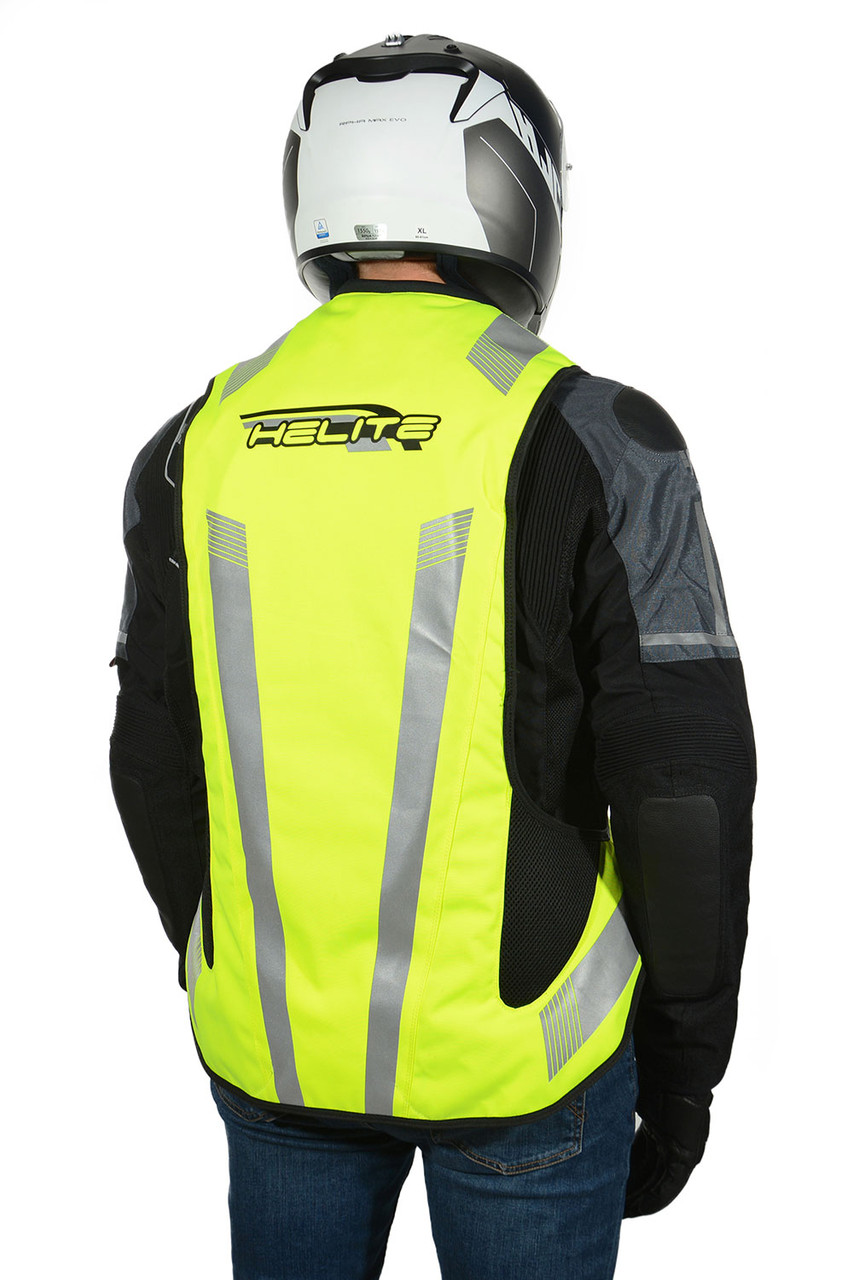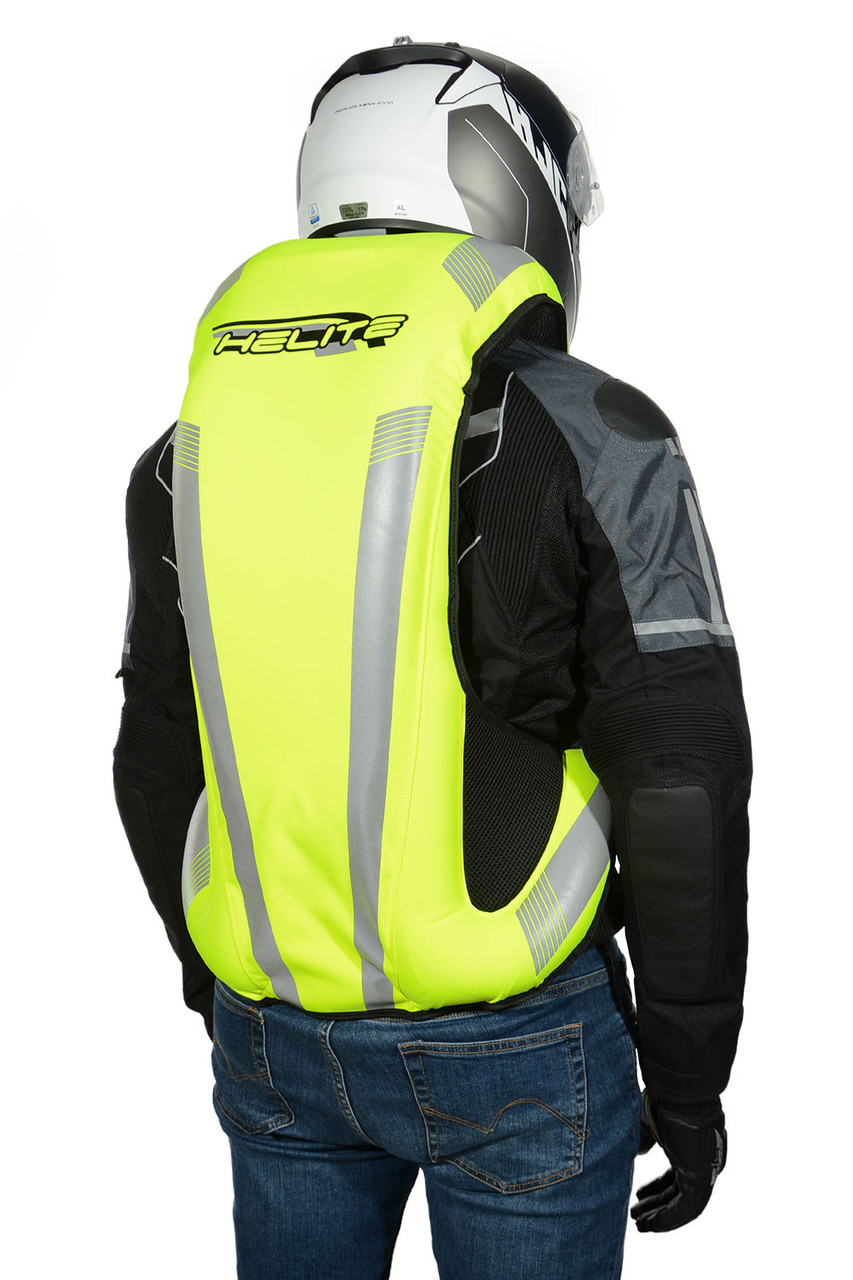 Did you know that the Michelin Man’s name is Bibendum? If Bibendum fell off his motorcycle, he would bounce. He’s nothing but inner tubes! If you wore a pile of innertubes around your torso and your neck, you would bounce instead of cracking ribs and your neck could not bend enough to hurt the vertebrae. Sounds like a great idea to be surrounded by inflated tubes if you are falling towards pavement and curbs.
Did you know that the Michelin Man’s name is Bibendum? If Bibendum fell off his motorcycle, he would bounce. He’s nothing but inner tubes! If you wore a pile of innertubes around your torso and your neck, you would bounce instead of cracking ribs and your neck could not bend enough to hurt the vertebrae. Sounds like a great idea to be surrounded by inflated tubes if you are falling towards pavement and curbs.
On the other hand, it would be hard to ride if your neck was held tightly in place and you could not turn your head. The inflated tubes around your chest would hinder your arm movement too. If only you could become the Michelin Man, the moment you fly off the motorcycle at the start of a crash.
You can make this transformation when you need it. More accurately, you can wear technology that senses a crash and turns you into a Bibendum that will prevent or lessen injury. Motorcycle Airbag Vests and racing suits have been around for a number of years and are getting more popular among old bikers worried about brittle bones snapping when a high-side slams you into the pavement. There are two types of these vests: mechanical and electronic. Mechanical vests use a tether that loops around the motorcycle’s frame and requires the rider to remember to attach the buckle from that tether to the vest every time she gets on the bike. An electronic vest uses GPS, accelerometers, IMU, etc. to sense that a crash has started. The rider must remember to keep the vest’s battery charged up between rides. Which type is better? Most experts agree that the electronic type senses more types of crashes and earlier. It’s also more expensive. Electronic versions allow for off-road modes that will not deploy for a simple drop. They also have a companion app for smartphones that allow the user to configure the vest and maintain a subscription.
The two pictures below show the Helite Turtle 2 before and after inflation. While riding, it is long and loose but does not flap in the wind due to the weight of the fabric and airbag. When it inflates, it gets shorter, and the neck goes up to immobilize the helmet. Both mechanical and electronic vests puncture a cartridge with compressed gas to fill the tubes of the airbags in 20 to 80 milliseconds. The vests do not stay inflated but slowly deflate in a few minutes.


I have personal experience with the Helite Turtle 2, a mechanical airbag vest. I wear it over my Aerostich Roadcrafter suit. Since the Helite has a large, stiff back protector (that’s why they named it “Turtle”), I do not use a back protector in the Aerostich. Attached to the tether cord is a ball separating a pointed piece of metal on the end of a strong spring from a 100cc CO2 cartridge.
Thanks to the BMW Connected App, I have data showing the speed and impact when I used the vest. I was creeping along in a traffic jam at 6 MPH when the van behind me smacked me with a force of 1 G. This propelled my F900XR forward under me and pulled the actuator ball out of its socket. The spring punctured the CO2 cartridge and filled the vest with 28 liters of pressurized air. The airbag was fully inflated before the top box struck my back and threw me forward and to the right. The computer showed that the bike hit the ground with a force of 1.5 G. I assume I would have felt the same impact.
But I did not feel the force of one and a half G because the airbag compressed, and the sensation was like jumping onto a bed. The air squished and absorbed the force that would have gone into my ribcage. I got a bruise on my right hip, but my torso was uninjured. Moreover, my helmet did not hit the ground because the air collar held it in place and allowed only a small deflection to the side of the impact.
I don’t know if I would have broken a rib without the airbag, but I bet the price of the vest that I would have. The stories I have heard about the pain of broken ribs make me glad that I have never experienced it. In this accident the airbag vest deployed perfectly and performed as expected. It inflated tightly around my chest and upward into the base of the full-face helmet. It did not compress my neck at all and the tightness around my chest was like a bear hug but I could still breathe easily. Over the course of five minutes, the vest slowly deflated and folded itself back into place. While the shop repaired the bike, I unscrewed the spent cartridge by hand, tightened the spring compressor with a hex key, put the ball actuator back into place, screwed on a new cartridge, and used the hex key to release the spring onto the ball actuator. It was surprisingly easy to do.
I never thought that I would be unlucky enough to use the airbag twice but four months later, a car pulled out from a stop sign and hit my right pannier. That pushed the bike to the left and I could not prevent the Beemer from slamming onto its left side. I stayed in the saddle until the bike and I were on the ground and then we separated. As the bike slid forward, it pulled the tether and inflated the vest. This accident showed the advantage of the electronic system. An electronic system would have measured the side force and recognized it as crash-inducing. It would have inflated the airbag before I was on the ground and before I separated from the motorcycle. In this accident, the airbag deployed too late to help with the ground impact but would have absorbed a secondary impact such as sliding into the curb.
While Helite and Klim let users replace the cartridge themselves, other manufacturers want you to pay a professional to reset the system. Klim even wants you to pay a monthly subscription fee to use the airbag but at least they provide a warranty for as long as the subscription is active. Klim also has a model with both street and adventure modes although there is an extra fee for both modes. The difference between the two modes is that adventure mode would not inflate if you fell gently on a trail. Adventure riders fall more often than street riders and would not want to replace a cartridge three times in one day.
Some airbag systems are designed to wear under your regular jacket, but you must ensure there is enough space under your suit or jacket for the airbag to deploy. A tight jacket would prevent full inflation and lower the amount of impact that the airbag can absorb.
There is no question that these airbag systems are expensive and no question that they provide a lot of protection in a crash. They start around $500 for systems that require an additional subscription fee. Regular street vests are $700 to $900. That’s a lot of money but surgery for open treatment of a rib fracture could cost $4,400 to $17,000. I think choosing an airbag vest is the cheaper option.


